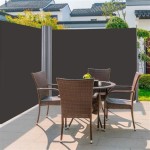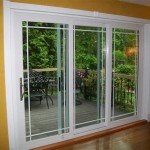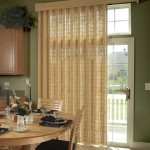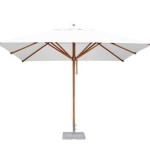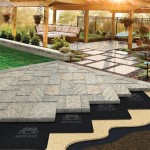```html
What Will Keep Birds Away From Your Patio
Birds, while often admired for their beauty and song, can become unwelcome guests on patios. Their droppings, nesting habits, and potential for scattering debris can create a nuisance. Several strategies can be employed to deter birds from frequenting patio areas, each with varying degrees of effectiveness depending on the bird species, environmental factors, and persistence of application.
Visual Deterrents: Scaring Birds Away
Visual deterrents exploit a bird's natural fear of predators or unfamiliar objects. These methods aim to create an environment that birds perceive as unsafe or undesirable, discouraging them from landing or nesting near the patio.
One common visual deterrent is the use of reflective surfaces. Shiny objects, such as reflective tape, aluminum foil strips, or commercially available bird-scaring devices, can reflect sunlight and create disorienting flashes of light. These flashes can startle birds and discourage them from settling in the area. The effectiveness of reflective deterrents can vary depending on the angle of the sun and the surrounding environment. Regular repositioning of the reflective materials may be necessary to maintain their effectiveness, as birds can become accustomed to static displays.
Another type of visual deterrent involves mimicking predators. Decoy owls, hawks, or other raptors can be strategically placed on or near the patio. These decoys should be realistic in appearance and periodically moved to prevent birds from recognizing them as harmless. The effectiveness of predator decoys can be enhanced by incorporating movement, such as hanging them from a string or using models with rotating heads. However, it is important to note that some birds may quickly realize that the decoys pose no real threat, especially if the decoys remain in a fixed position for extended periods.
Hanging streamers or windsocks can also act as visual deterrents. The movement of these objects in the wind can be unsettling to birds, discouraging them from approaching the patio. Brightly colored streamers or windsocks are often more effective, as they are more easily visible to birds. The material used for streamers and windsocks should be durable and weather-resistant to withstand wind and rain. Regular replacement may be necessary when the materials become faded or torn.
Furthermore, laser pointers, especially those that project green light, can be used to scare birds. The moving light can be perceived as a threat, causing birds to take flight. However, the use of laser pointers should be approached with caution, as direct exposure to laser beams can be harmful to both humans and animals. Laser pointers should only be used briefly and directed away from eyes.
Physical Barriers: Preventing Access
Physical barriers prevent birds from accessing the patio area by creating a physical obstruction. These barriers can be particularly effective in preventing nesting or roosting on specific structures, such as railings, eaves, or awnings.
Bird netting is a common and effective physical barrier. It involves installing a net over the area to be protected, preventing birds from entering. Bird netting is typically made of durable plastic or nylon and comes in various mesh sizes to exclude different bird species. The netting should be properly installed and secured to prevent birds from becoming trapped or injured. Regular inspection and maintenance are necessary to ensure that the netting remains intact and free of holes or tears.
Bird spikes are another type of physical barrier that can be attached to surfaces where birds commonly perch or roost. These spikes consist of rows of sharp, pointed projections that make it uncomfortable for birds to land. Bird spikes are typically made of stainless steel or plastic and come in various lengths and configurations. They should be installed with care to avoid injuring birds or humans. Furthermore, ensure the spikes are correctly adhered to the surface to prevent them from falling off in strong winds or heavy rain.
Wire grids or mesh can be used to cover openings or spaces where birds may try to nest. This method is particularly effective for blocking access to eaves, vents, or other sheltered areas. The grid or mesh should be made of a durable material and securely attached to the structure. The mesh size should be small enough to prevent birds from squeezing through. Regular cleaning of the wire grid or mesh may be necessary to prevent the accumulation of debris, such as leaves or feathers.
Another option is the use of bird repellent gel. This is a non-toxic, sticky substance that is applied to surfaces where birds land. The gel makes the surface unpleasant for birds to stand on, deterring them from landing or roosting. Bird repellent gel is typically long-lasting and weather-resistant. However, it can become dirty or covered in debris over time, requiring periodic reapplication.
Auditory Deterrents: Using Sound to Repel
Auditory deterrents use sound to scare birds away from the patio area. These deterrents can range from ultrasonic devices to recordings of predator calls or distress signals. The effectiveness of auditory deterrents can vary depending on the bird species and the surrounding environment.
Ultrasonic bird repellers emit high-frequency sounds that are inaudible to humans but can be irritating to birds. These devices are often battery-powered or plugged into an electrical outlet and can be placed on or near the patio. The effectiveness of ultrasonic bird repellers is debated, with some studies suggesting that they are ineffective against certain bird species. Furthermore, some domestic animals may be able to hear and be affected by these frequencies. Careful consideration should be given to neighbors who own pets before installation.
Sonic bird repellers play recordings of predator calls or distress signals to scare birds away. These devices can be programmed to emit different sounds at different intervals. The recordings should be realistic and varied to prevent birds from becoming accustomed to them. The volume of the recordings should be adjusted to avoid disturbing neighbors. Sonic bird repellers can be useful for dispersing flocks of birds, but their effectiveness may be limited in areas with high levels of ambient noise.
Wind chimes can also act as auditory deterrents. The sound of wind chimes can be unsettling to birds, especially if the chimes are made of metal or other materials that produce loud or discordant sounds. The placement of wind chimes should be strategic to maximize their effectiveness. They should be hung in areas where birds are likely to perch or roost.
Finally, some bird species may be deterred by loud noises, such as clapping hands or banging pots and pans. This method is typically only effective for short-term control, as birds can quickly become accustomed to the noise. However, it can be useful for scaring birds away from specific areas, such as outdoor dining tables.
Maintenance and Environmental Management
Effective bird control often requires a combination of deterrent methods and consistent maintenance and environmental management practices. Removing food sources and nesting materials can make the patio area less attractive to birds.
Regularly cleaning the patio to remove bird droppings, spilled food, and other debris can help to discourage birds from returning. Use a hose or pressure washer to clean hard surfaces and a broom or vacuum cleaner to clean carpets and rugs. Promptly clean up any spills or messes that may attract birds.
Eliminating food sources is critical for long-term bird control. Cover trash cans and compost bins to prevent birds from accessing food waste. Avoid leaving pet food or water bowls outside, as these can also attract birds. If you feed birds in your yard, do so away from the patio area. Choose feeders that are designed to prevent birds from scattering seeds.
Removing nesting materials can also help to discourage birds from nesting on or near the patio. Regularly inspect eaves, gutters, and other potential nesting sites for signs of nests. Remove any nesting materials as soon as they are discovered. Trim trees and shrubs to reduce the amount of cover available to birds.
Finally, consider landscaping choices that are less attractive to birds. Avoid planting trees or shrubs that produce berries or seeds that birds like to eat. Choose plants that are thorny or have dense foliage, as these can be less attractive to birds. Consult with a local nursery or landscaping professional for advice on selecting bird-resistant plants.
```
How To Keep Birds Off Porches Avian Enterprises

How To Stop Birds From Building Nests And Pooping Around Your House Cars Youtube

3 Easy Steps How To Keep Birds Away From Your Patio

20 Ways To Keep Birds From Pooping On Decks Patios Balconies And Pools Woohome

12 Effective Ways To Keep Birds Out Of The Vegetable Garden

Keep Birds Away From Your Patio Deck Or Balcony With These Simple Tips Deckseal

3 Easy Steps How To Keep Birds Away From Your Patio

12 Effective Ways To Keep Birds Out Of The Vegetable Garden

5 Home Remedies To Keep Birds Away Bird Control

12 Effective Ways To Keep Birds Out Of The Vegetable Garden

